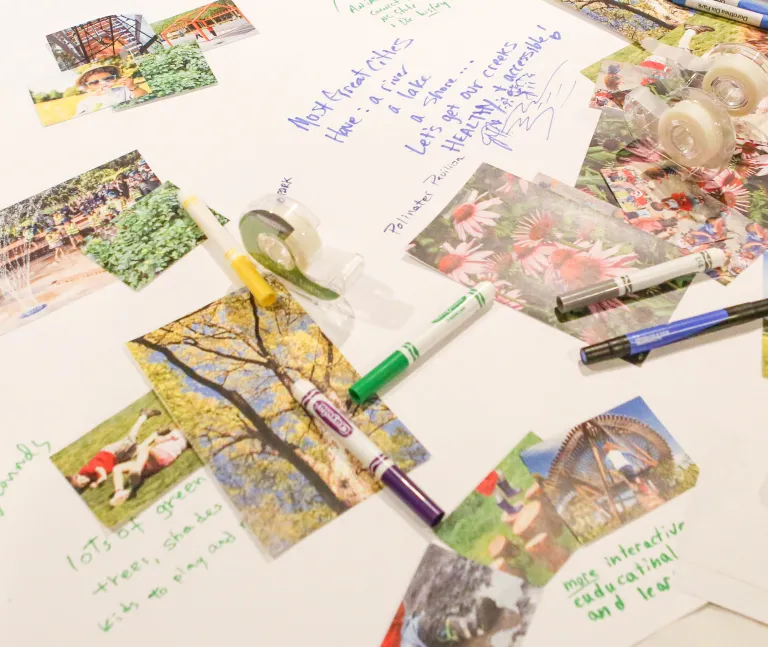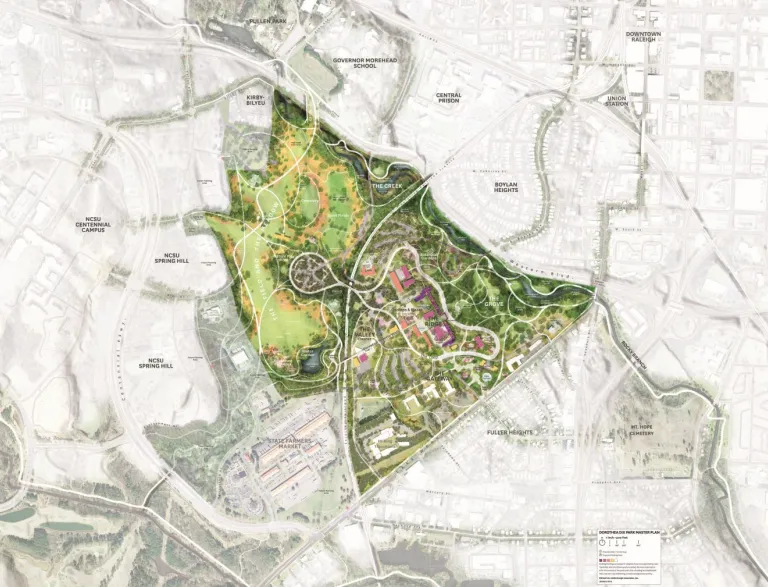Master Plan

About the Dix Park Master Plan
In 2017, the City of Raleigh, in partnership with Dix Park Conservancy, embarked on the incredible effort to create America’s next great public park through an innovative and extensive master planning process.
Michael Van Valkenburgh Associates and a team of consultants led the development of the plan and process that engaged over 65,000 area residents in a discussion of the future of the park.
Raleigh City Council adopted the Dix Park Master Plan in 2019 – directing staff to develop a Phase 1 implementation plan.
Image 1 of 1
Phase 1 Implementation
During the summer and fall of 2019, staff made a series of presentations to Council on an implementation plan for Phase 1 outlining seven major projects:
- Creation of the plaza and play area
- Enhancement of the Rocky Branch and landfill area
- Creation of a land bridge over Western Boulevard
- Creation of a multi-use path to connect Rocky Branch Greenway to Walnut Creek Greenway
- Restoration of the historic entry and Stone Houses
- Restoration and enhancement of the historic cemetery
- Improvements to utility infrastructure
The proposed projects within this first phase embody the three Master Plan principles of: Open Up and Connect, Build from What is There, and Offer Something for Everyone. The collection of projects connect the park to the greater community, repair and enhance the unique landscapes and structures that exist today, and create a variety of spaces to offer multiple experiences for all park users. These projects improve the park’s edges, create new entries and connections, and speak to the dual nature of the site as a place that provides both natural experiences apart from the city and an active urban park experience for the 21st century.
For the next five years – including through a global pandemic – worked continued on these projects. By 2025, the following Phase 1 projects were complete:
- Gipson Play Plaza
- Rocky Branch Enhancement Feasibility Study
- The Stone Houses
- Building & Site Analysis
To continue the momentum, the City and the Dix Park Conservancy developed a 10-Year Implementation Plan outlining the next steps in Dix Park's development.


